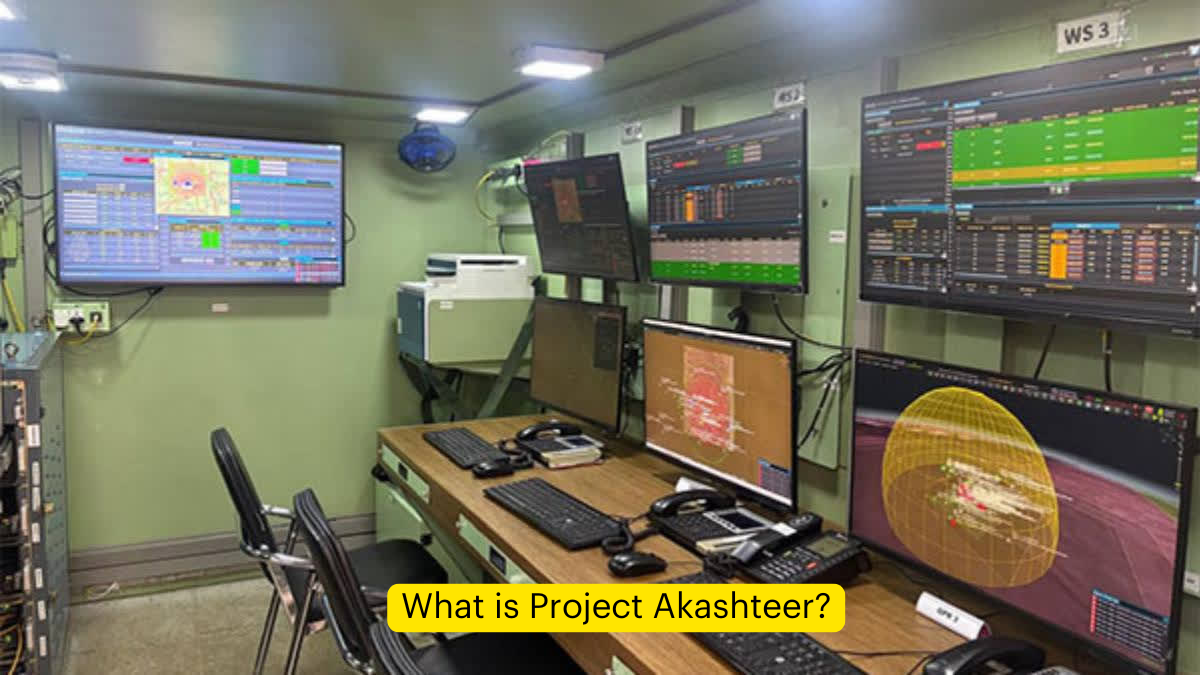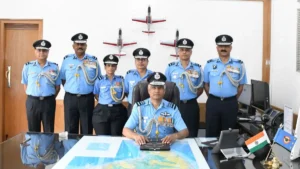In a landmark achievement aimed at strengthening India’s defense infrastructure, the Indian Army has reached a major milestone with the successful development and phased induction of Project Akashteer. This ambitious initiative, a significant part of the Army’s broader strategic transformation plans, is poised to modernize India’s air defense network, addressing contemporary aerial threats with unmatched precision and agility. Project Akashteer stands as a key element of the Indian Army’s “Decade of Transformation” and its “Year of Tech Absorption,” highlighting the country’s commitment to integrating cutting-edge technologies into its military framework.
A Step Toward Modernization
The development of Project Akashteer is a crucial part of India’s efforts to modernize its defense capabilities. As aerial threats become more sophisticated, having a robust air defense system is essential for safeguarding national security. Project Akashteer has been designed to provide India with a highly responsive and integrated air defense network that can detect, track, and neutralize incoming threats in real time, ensuring complete air sovereignty.
The system was recently subjected to a real-time validation exercise that simulated the type of aerial threats expected in future wars. Senior military officers closely observed the process and praised the development team’s efforts in realizing a transformative leap in the Indian Army’s air defense capabilities. The validation confirmed that Akashteer can effectively defend against a variety of aerial threats, including fast-moving supersonic missiles, drones, and enemy aircraft.
Key Features of Project Akashteer
Project Akashteer is distinguished by its advanced features, which integrate the latest technological developments in the field of air defense. These features not only enhance the effectiveness of India’s defense operations but also ensure that the Indian Army can respond to emerging threats with agility and precision. Below is a closer look at the key elements that make Akashteer a game-changer in air defense:
Comprehensive Sensor Fusion
One of the most groundbreaking aspects of Akashteer is its ability to achieve “bottoms-up” sensor fusion. This integration allows land-based sensors from both the Army Air Defence (AAD) and the Indian Air Force (IAF) to be seamlessly connected. This fusion creates a unified and comprehensive air picture that is accessible to the lowest operational units within the Army’s Air Defence formations.
The significance of this is immense, as it enables better coordination and enhanced situational awareness. Operational units now have access to real-time data, allowing them to react more swiftly to potential threats and coordinate their responses more effectively across the entire force. This system greatly reduces the risk of missing vital threats, as the air picture is continually updated and made available to all concerned units.
Automated Operations for Faster Response
In the domain of air defense, speed is critical. Every second counts when responding to aerial threats, especially those approaching at high speeds. Akashteer eliminates the time-consuming need for manual data entry by automating its operations. This automation significantly reduces the time required for decision-making and ensures that the response to threats is as swift and efficient as possible.
For instance, when an aircraft approaches at supersonic speeds, it can cover up to 18 kilometers in just one minute. Without an automated system like Akashteer, crucial seconds would be lost in manual data processing. The system’s ability to operate at maximum efficiency ensures that there is no delay in detecting and neutralizing threats, keeping India’s airspace secure.
Decentralized Engagement Authority
One of the critical aspects of Akashteer is its decentralized approach to engagement authority. Rather than relying solely on central command, the system allows units on the front lines to make quick decisions regarding the engagement of hostile aircraft. This decentralization empowers local commanders and units to act rapidly, which is especially important in high-pressure situations where time is of the essence.
At the same time, the system ensures that these units have the freedom to engage threats while maintaining the necessary checks to prevent friendly-fire incidents. This aspect is especially important in sensitive regions such as Northern and Eastern Commands, where Akashteer systems have already been deployed and are operational.
Advanced Real-Time Air Picture
The real-time air picture generated by Akashteer consolidates live data from a variety of sources. These sources include advanced 3D Tactical Radars, Low-Level Lightweight Radars, and the Akash Weapon System. This multi-dimensional view of the airspace provides commanders with an unprecedented level of situational awareness, giving them a complete understanding of air activity in their operational area.
The ability to visualize the airspace in such detail allows for better strategic planning and immediate response to threats. It also enhances the decision-making process by providing accurate and timely information on the location and type of threats, ensuring that the forces can take the most effective action.
Built-in Redundancy and Scalability
Akashteer is designed with robust communication redundancy, ensuring that the system remains functional even under adverse conditions. This feature is vital for maintaining operational continuity during electronic warfare or other scenarios that might disrupt communications.
Additionally, Akashteer has been designed with both software and hardware upgrade capabilities, ensuring that the system remains future-proof. As technology continues to evolve, Akashteer can be upgraded to meet new challenges, making it adaptable to future operational needs and technological advancements.
Flexible Deployment Across Formations
Another notable feature of Akashteer is its flexibility in deployment. Recognizing the diverse operational requirements of the Indian Army, the system has been designed to offer mobile and adaptable platforms for strike formations, while pivot formations are equipped with hardened, land-based systems. This flexibility ensures that Akashteer can effectively support a range of tactical scenarios, whether in mobile operations or in static, defense-oriented deployments.
Phased Induction and Future Plans
The phased induction of Akashteer is currently underway, with the Indian Army aiming to deliver a total of 455 systems. As of now, 107 systems have already been delivered, and an additional 105 systems are expected to be delivered by March 2025. The remaining systems are scheduled for delivery by March 2027, ensuring that all of the Indian Army’s defense units and formations are equipped with this state-of-the-art air defense system.
News Summary
| Category | Details for Project Akashteer |
|---|---|
| Why in News | Project Akashteer has gained attention due to its real-time validation, phased induction, and advancements in India’s air defense capabilities. This marks a major milestone in India’s “Decade of Transformation” and “Year of Tech Absorption”, showcasing significant improvements in automated air defense systems and integration across multiple military units. |
| Manufactured by | Bharat Electronics Limited (BEL) and Defence Research and Development Organisation (DRDO) |
| Designed by | DRDO (Defence Research and Development Organisation) |
| Features (e.g., range) | – Range: Akashteer integrates a variety of air defense systems, including Akash Weapon System and radar systems, capable of tracking and engaging targets at long-range (up to 25–30 km). – Automated Operations: Enhances speed and accuracy in detecting and engaging targets. |
| Under any mission | Project Akashteer is part of the Indian Army’s “Decade of Transformation” and “Year of Tech Absorption” |
| Earlier versions | – Akash (previous version) for surface-to-air missile defense, with significant enhancements in Akashteer focusing on automation and integration of air defense sensors. |
| Launched by | Indian Army under the Ministry of Defence |
| Used by | Primarily used by the Indian Army and Indian Air Force for air defense operations |
| Launching Place | Field formations across India, especially in Northern and Eastern Commands (along borders with China and Pakistan) |
| Budget | Budget details not publicly disclosed; however, the overall development costs are part of India’s defense modernization plans, which are in the range of several billion rupees. |
| Equipment Needs | – Akashteer integrates with a variety of sensors like 3D Tactical Radars, Low-Level Lightweight Radars, and Akash Weapon Systems for air defense. – Communication networks and command & control systems that ensure integration across forces. |




 India-UAE Desert Cyclone II Military Exe...
India-UAE Desert Cyclone II Military Exe...
 Air Marshal Tejinder Singh Takes Charge ...
Air Marshal Tejinder Singh Takes Charge ...
 Air Marshal S. Shrinivas Takes Charge as...
Air Marshal S. Shrinivas Takes Charge as...







